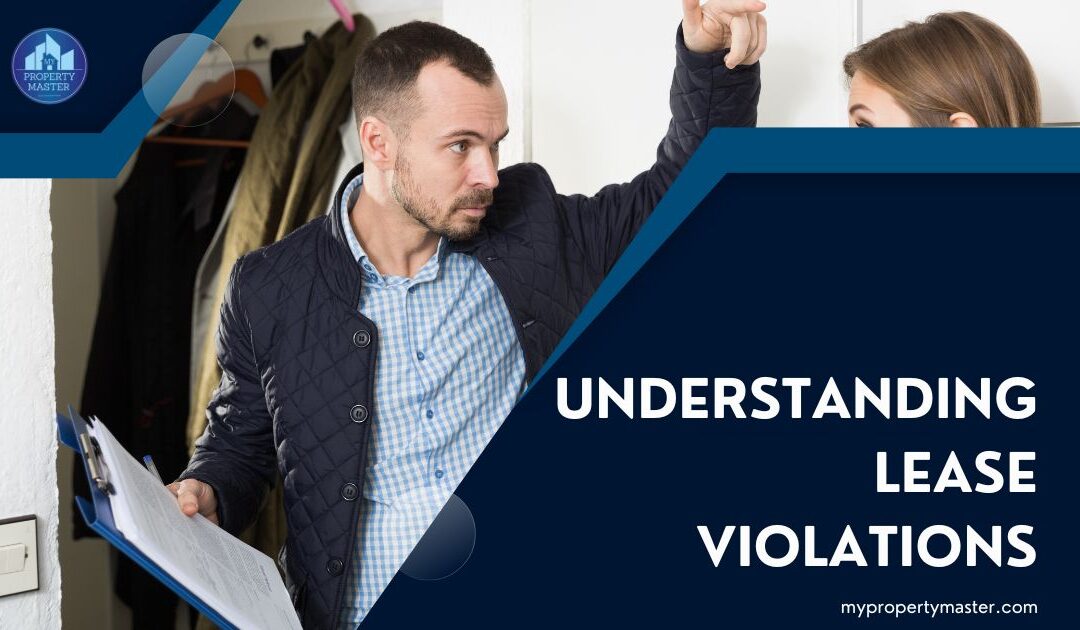

Lease agreements are binding contracts that outline the terms and conditions between landlords and tenants. However, tenants sometimes unintentionally or intentionally breach these terms, leading to lease violations.
In this post, I will explore what constitutes a lease violation, its consequences, how to navigate such situations, and more.
Let’s get started.
Table of Content show
A lease violation occurs when a tenant fails to adhere to the terms outlined in the lease agreement signed with the landlord. These terms typically cover aspects such as rent payment, property maintenance, noise regulations, and the number of occupants.
Lease violations can also occur by landlords, which I will discuss later in this post. When you generally hear about lease violations, assume it’s the tenant.
Lease violations can come in many forms based on the actual agreement and the breach. Here are some of the most common examples:

When you violate your lease, consequences may vary based on the severity of the breach and the landlord’s discretion.
Initially, you might receive a warning or a lease violation notice outlining the infraction and required remedies . Failure to address the violation could lead to further actions such as fines, lease termination, or even legal proceedings like eviction.
It’s crucial to communicate with your landlord, rectify the issue promptly, and understand the potential repercussions to mitigate any adverse effects on your tenancy.
Some lease agreements include provisions for a rent-protected lease violation fee. This fee is an additional charge imposed on tenants who violate lease terms. It is a deterrent against future violations and helps cover the landlord’s administrative costs.
Rent-protected lease violation fees typically range from around $50 to several hundred dollars.
However, it’s important for tenants to carefully review their lease agreement to understand the implications of any rent-protected lease violation fee and to avoid triggering such charges.
A lease violation notice is a formal document issued by the landlord to notify the tenant of their breach of the lease agreement. It typically outlines the specific violation, remedies required, and consequences for failing to comply.
Upon receiving a lease violation notice, tenants should carefully review the document, understand the nature of the violation, and take appropriate action to remedy the situation. This may involve rectifying the issue, communicating with the landlord, or seeking legal advice.
I attached a lease violation notice template below. You can download it for free (no subscription is required).
After you download the file, you will get a PDF. You can copy everything over to a Word document or whatever you like. Feel free to make necessary edits as you see fit.
Generally, lease violations do not go on your record, but their impacts or outcomes will go on your tenant record, especially evictions and collections.
Lease violations can impact future rental applications. However, the severity of the breach and how both parties handle it can influence its long-term implications.
While some lease violations may warrant eviction proceedings, not all breaches automatically lead to eviction .
Landlords must follow legal procedures and provide sufficient notice before initiating eviction , allowing tenants to address and rectify the violation.
The number of lease violations tolerated before eviction varies depending on local laws, the terms of the lease agreement, and the landlord’s discretion.
It also depends on the type of violation a tenant committed and its overall impact. Not paying rent, making noise, and intentionally destroying appliances are some examples of lease violations, but their implications are different. In the same vein, a landlord can tolerate five lease violations if their implications are very low, such as delayed rent payment. However, the same landlord can start proceeding with eviction for one lease violation if it makes a huge impact, such as intentionally damaging property.
In a nutshell, repeated or severe violations may expedite the eviction process.
It’s important to note that lease violations can also occur on the landlord’s part. Tenants have rights protected by law, and if the landlord breaches the lease agreement or fails to fulfill their obligations, tenants may have recourse through legal channels.
Lease violations can be complex and have significant implications for tenants and landlords.
By understanding what constitutes a violation, how to respond to notices, and the potential consequences, tenants can proactively address issues and maintain positive landlord-tenant relationships.
Likewise, landlords must uphold their responsibilities and follow legal procedures when addressing lease violations to ensure fair treatment of all parties involved.